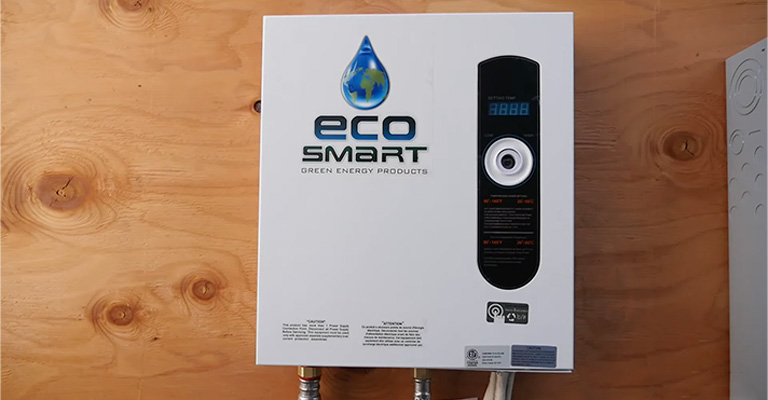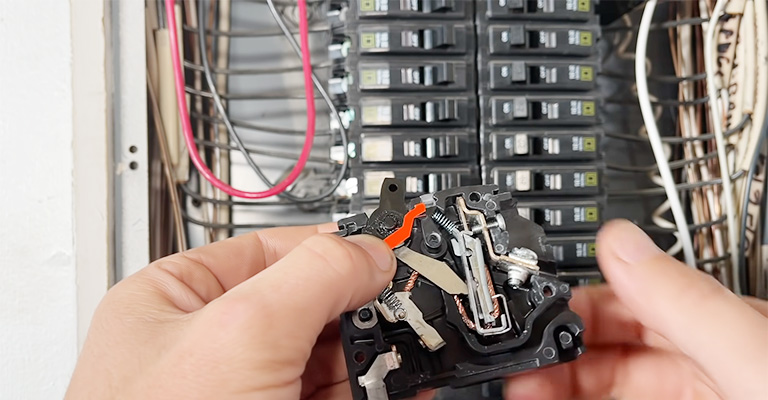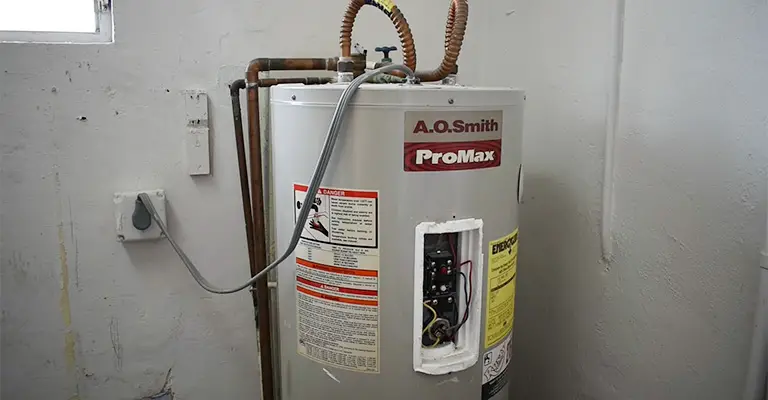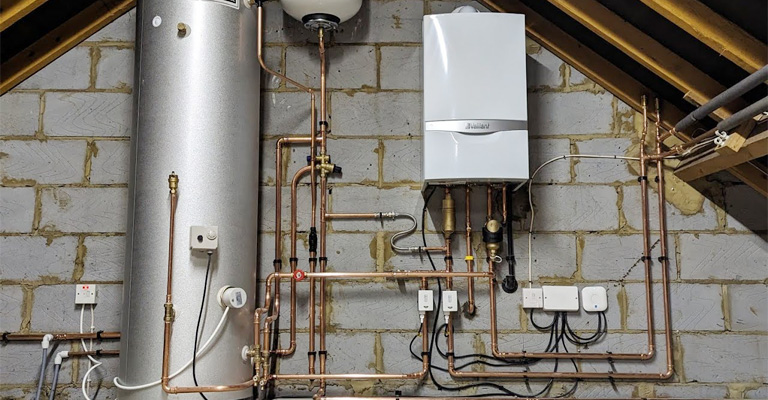When it comes to upgrading or installing a tankless water heater in your home, one of the critical considerations is whether your electrical service can handle the increased demand.
A 200-amp electrical service is a common standard in many households, but the question remains: Is a 200-amp service enough to support a tankless water heater efficiently and safely?
When using a 200-amp service, multiple appliances are able to run simultaneously, such as hot water heaters, air conditioners, and hair dryers.
Depending on the amperage of your house’s electrical service, you can run multiple appliances simultaneously.
The 60-amp service, however, will not be able to run an air conditioner, hair dryer and electric hot water heater simultaneously.
Is 200 AMP Service Really Enough For a Tankless Water Heater?
With no further information about your setup, it’s difficult to answer. A tankless water heater may require as little as 20 amps, while others may require as much as 200 amps.
There is no fixed answer; it all depends on the size and power of the unit, as well as the amount of electricity your home consumes. Make sure you do a load calculation both with and without the new heater for the entire house.
Based on that, you can determine whether the heater has enough headroom. In this situation, you cannot substitute ad-hoc methods like a promise to take care when using large appliances.
Provisioning will become increasingly difficult as new technology such as “smart panels” emerges. You should always invest in a 150A heater when going tankless, because scrimping and going too small is the biggest mistake.
You are obviously faced with a huge demand on your service as a result of this. In an all-gas house, there may be 150 Amps left over in a 200 Amp panel; however, the heater is likely to require smart panel technology.
In the British tradition, they use smaller heaters closer to the point of use, called “electric showers” that operate between 40 and 60 amps. It is important to note that these also slow down the flow to 1-1.5 GPM, allowing the larger size to be used.
If you are unsure of the amount of energy required by your tankless water heater, contact a professional. An average tankless water heater should operate with 200 amps of electricity.
What Is The Standard Amperage For A Tankless Water Heater?

Generally, on-demand heaters require 120 amps to operate. Compared to traditional units, which only require 30 amps of power, that number is significantly higher.
It is possible to only get 100-200 amps if you live in an older house. Having your electrical system upgraded will require the services of a professional electrician.
In order to increase the total amps available, a subpanel of circuit breakers may be added. It is the type and fuel requirements, as well as the heater’s capacity that determine how much amperage a water heater uses.
Power Requirements For Tankless Water Heater
The energy-efficiency of tankless water heaters is much higher than that of traditional water heaters, whether they are gas or electric.
Despite the use of propane for gas tankless water heaters, other parts still use electricity. Is there a specific electrical specification for a tankless gas water heater?
To operate the electric pilot light and control panel, a tankless gas water heater typically requires a 15- or 20-ampere 120-volt circuit.
Water heaters of this type should not have courses that exceed 120 amperes, and they should be protected by no more than 150 amperes.
The amount of electricity required by your tankless gas water heater will vary depending on where you live. The reason for this is that while some areas have access to 220 volts of power, others only have 110 volts.
Due to this, the wattage of the unit determines the voltage needed by the circuit. There is usually a range of 208 volts to 277 volts available.
Evaluating A Home’s Electrical Supply

Your house’s electrical distribution system consists of wire, conduit, meter, panel, and main breakers, all of which are integral to the size of your electrical service.
Electrical conduits are pipes that enter houses either from underground main electric wires or from aboveground power lines.
Two-inch conduits can support 200-amp wire; a one-and-a-half-inch conduit can handle 100-amp wire, and a one-inch wire can handle 60-amp wire.
It should be noted, however, that many conduits are oversized, so a 2-inch conduit might be able to carry a 60-amp service. It is also possible to determine the electrical capacity of a service wire by looking at it.
Copper wire of six gauge indicates 60 amps, copper wire of four gauge indicates 100 amps, copper wire of two gauge indicates 125 amps, copper wire of one gauge indicates 150 amps, and copper wire of 2/0 gauge indicates 200 amps. Please avoid touching any exposed wiring.
In addition, some electrical meters have an amperage rating printed on their faces or bodies. A label indicating the rating of your electrical panel might have been provided by the manufacturer or attached by the installer.
You should also be able to tell what amperage rating your main breaker or fuse is by looking at the amperage rating. It is important to write the capacity of your main breaker on it or adjacent to it since it is the largest breaker you have.
Taking measurements of the wires in your breaker panel is not a good idea for a homeowner. Consult a professional electrician to determine your main breaker or fuse’s amperage rating by looking at your electrical meter.
Depending on the source, some wire sizes indicate different amperages than what is indicated by the wire size.
The lowest amperage rating should be determined by comparing all the information provided by your electrician.
Using the lowest number, you can determine your home’s electrical service capacity and choose a tankless electric water heater accordingly.
How Many AMPS Do Electric Tankless Water Heaters Require?

Tankless water heaters typically consume 120 amps when operating. To increase your property’s amperage and upgrade your infrastructure, you’ll probably need the services of a professional electrician.
In the long run, tankless water heaters can save you money on your power bill because they are more energy-efficient than traditional heaters.
Compared to traditional tank water heaters, electric water heaters consume less energy. To ensure your property can accommodate a tankless water heater, talk to a professional electrician before you buy.
How Many AMPS Does a Gas Tankless Water Heater Use?
To power the electric pilot light and control board, tankless gas water heaters require a 120-volt circuit of 15 amps or 20 amps.
Under the National Electrical Code, instantaneous water heater circuits must not exceed 120 amperes and must be protected from overloading of 150 amperes.
Do I Need To Upgrade My Electrical Panel For A Tankless Water Heater?
The electrical panel of your tankless water heater will probably need to be upgraded. It is recommended that a qualified professional upgrade the electrical panel on a tankless water heater since they require more electricity than standard water heaters.
Depending on the size and model of your tankless water heater, the amount of electricity it will require will vary, so it’s important to research how much power it’ll require before installing it.
A home with a 200-amp electrical panel will usually require an upgrade if the unit’s size requires more amps than what is available.
Depending on your water heater’s size and specific requirements, an electrician can determine whether an upgrade is necessary.
The Bottom Line
Even 400 amps may not be enough if you have electric heat, electric stove, electric dryer.
You should check with the electric company to see how large a service they’re willing to provide and if there will be an additional charge for services larger than 200 amps if this is undeveloped land.







